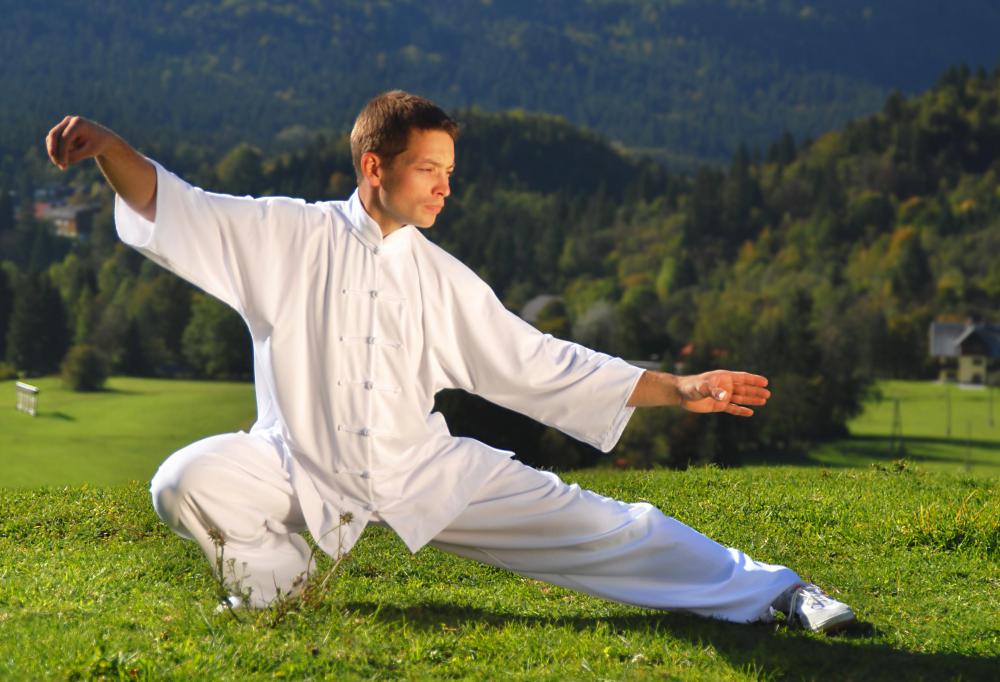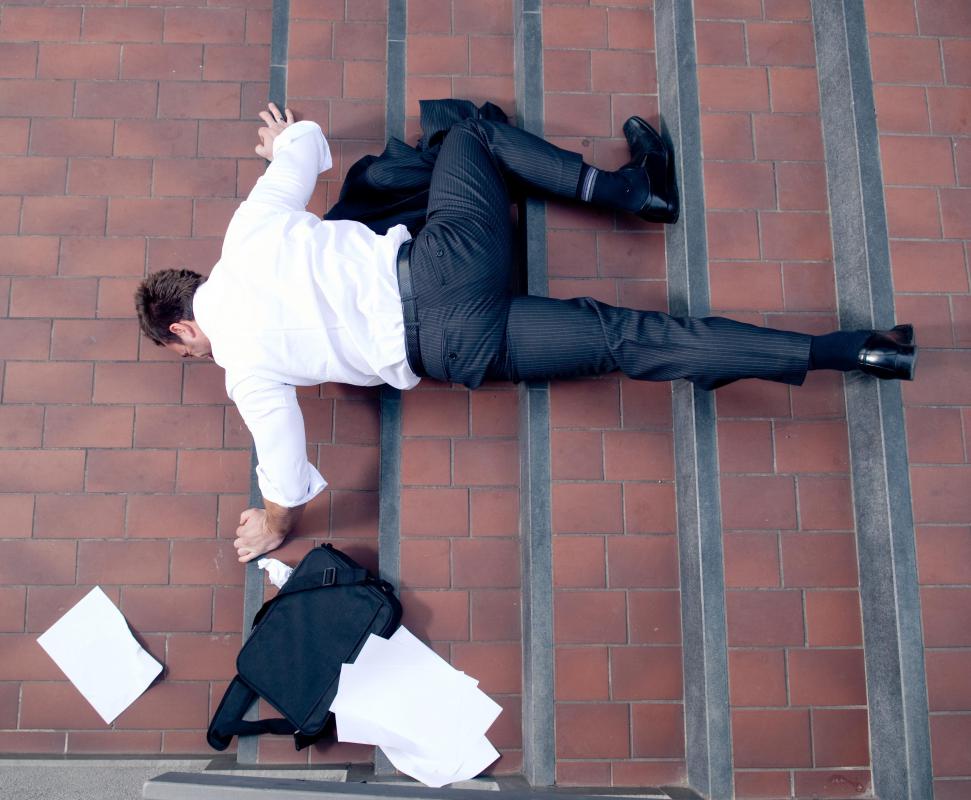At WiseGEEK, we're committed to delivering accurate, trustworthy information. Our expert-authored content is rigorously fact-checked and sourced from credible authorities. Discover how we uphold the highest standards in providing you with reliable knowledge.
What are the Different Types of Vestibular Exercises?
Vestibular exercises designed to help people with balance problems come in a number of types, including exercises in specific positions, exercises with and without supervision, and exercises using various props, as opposed to things people can do on their own. People with balance disorders usually benefit from consulting a physical therapist to discuss vestibular exercises and may be given assignments to do at home, in addition to working under the direction of the therapist. People who lack access to a physical therapist can do a range of home exercises to improve balance and learn to compensate for balance problems.
Positionally, exercises can be broken into sitting, standing, and moving exercises. People may start with sitting exercises to begin developing more balance and stability with limited risk of falling. As they improve, they can move to standing exercises to work on posture, balance, and stability in a standing position. With a physical therapist, patients may work in a harness for safety. Moving exercises require patients to walk or engage in other movements while doing things like tilting their heads, moving their limbs, and otherwise pushing their vestibular systems to adjust to changes in the environment.

Vestibular exercises include head exercises like head tilts and turns where people work on moving their heads while staying stable and keeping their eyes fixed on an object. Eye exercises to move the eyes independently without getting dizzy or nauseous are also used. These types of vestibular exercises are easy to do at home after a patient has been provided with instruction.

For balance, patients are sometimes advised to try yoga, tai chi, and similar activities. These can improve strength, coordination, and balance. While not vestibular exercises in the traditional sense, they can be beneficial for people with balance disorders and may also have other health benefits, depending on a patient's general level of fitness. Activities like yoga, for example, can sometimes help people with anxiety, stress, and depression, while the focus in tai chi may be helpful for people who have trouble concentrating.

Before undertaking vestibular exercises, patients should get coaching in how to perform the exercises properly. It is important to stop and rest if people start feeling dizzy or disoriented during a session, and to pick up once the discomfort subsides. Having spotters around while doing standing and walking exercises can be recommended for people at risk of falls. Physical therapists may be able to travel to a patient's home to provide guidance and assistance for people with mobility limitations who cannot easily get to a physical therapy center.
AS FEATURED ON:
AS FEATURED ON:













Discuss this Article
Post your comments